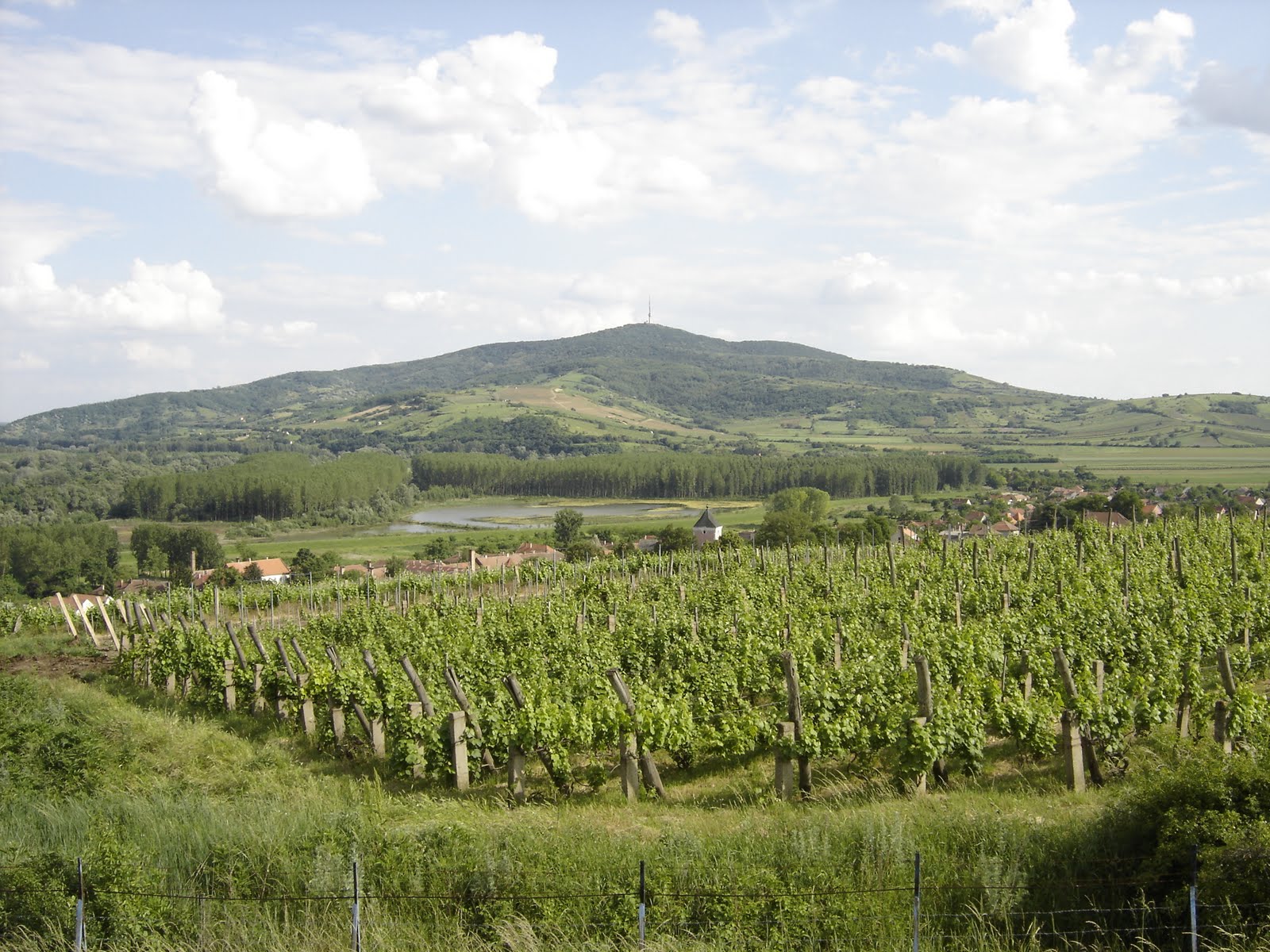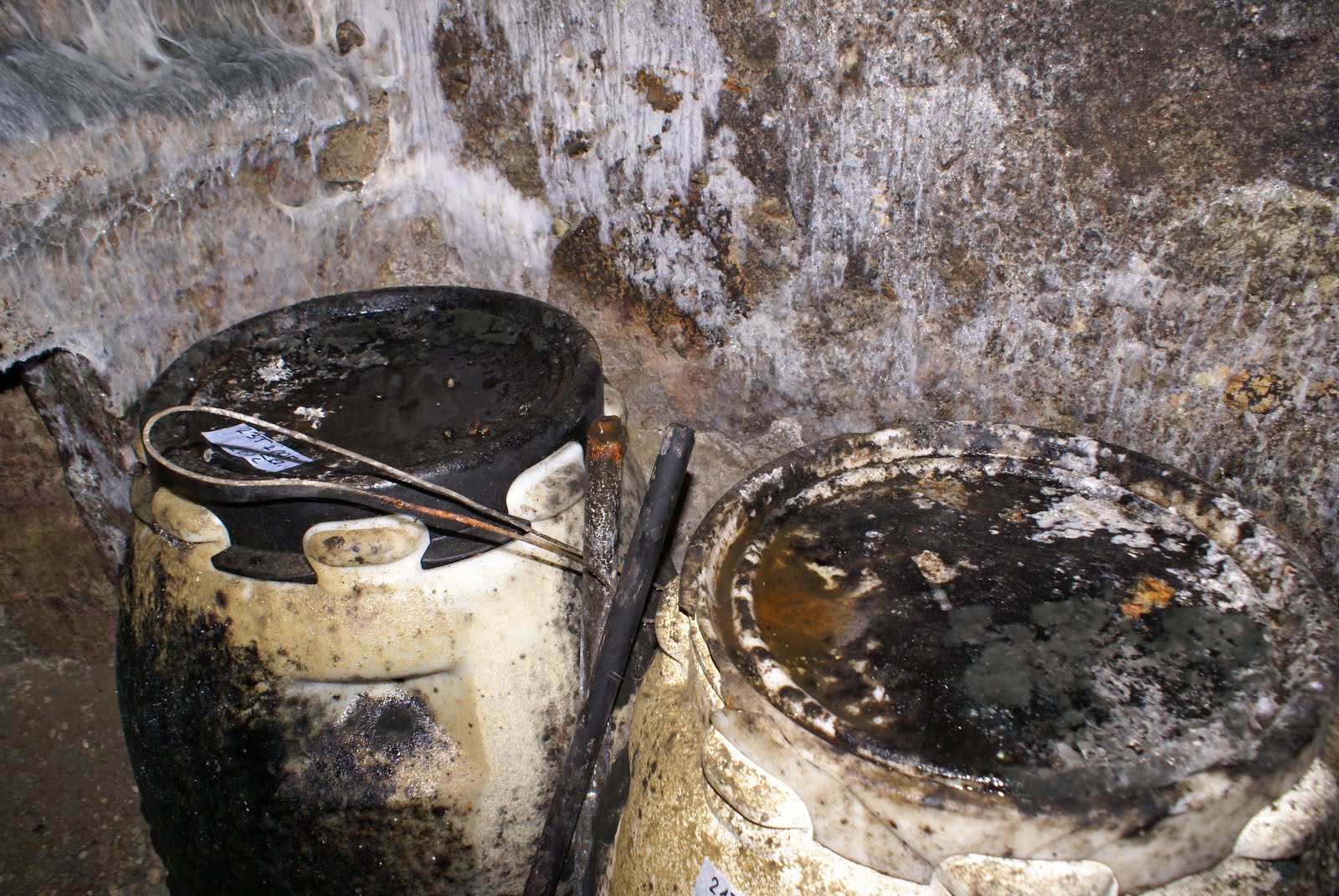In Tokaj (1): Wounded heroes
Posted on 16 January 2010
For the visitor from outside, wintertime Hungary is depressive. The derelict villages are desert and the atmospheric depression coincides with very harsh economic times for Tokaj. A mixture of unwise business decisions from the late 1990s and Hungary’s suicidal governmental policy of the last few years has resulted in a complete standstill of sweet wine sales. Large companies are reporting hundreds of thousands €’s losses, and many small estates are struggling to survive.
It’s an irony that this decadence is coinciding with the production of the world’s very best sweet wines. I apologise to those Yquem or Kracher or Egon Müller lovers out there but they cannot really equal the sheer sensual bliss of a Királyudvar Lapis Aszú 2002 or István Szepsy 2003. This simple truth found more than a few confirmations during my short stay here in Tokaj.
Vineyards on the eastern slope of Tokaj Hill.
It is also becoming clear that after the royal duo of 1999 and 2000 and some extremely convincing 2002s, it’s 2003 and 2006 that are now delivering Tokaj’s best wines of the decade. (They will need to last a few years; there was almost no sweet wine made in 2009 to due adverse autumn weather). 2003, Europe’s hottest and driest vintage on record, gave birth to some mildly atypical but fantastically tense and driven botrytis wines that will live the life of a generation, or two. My tastings have been far from exhaustive but István Szepsy, Zoltán Demeter, Úri Borok’s Szt. Tamás, Royal Tokaji’s Mézes Mály, and even the lesser-known Erzsébet’s Aszúeszencia provided the most excitement; Demeter’s 260g-sugar, 10.5g-acids warhorse might well be the wine of the vintage.
Tokaj, as mentioned, is in crisis. Thousands of bottles of botrytis aszú goingas back as 1998 remain unsold, and the obvious vineyard buying &planting overenthusiasm of the late 1990s has now become a serioushickup. I’ve seen one winery where dry whites from 2007 are still intank because there’s no cash to buy bottles. Those estates that debutedon more realistic business estimations later in the 2000s are faringbetter, basing their turnover on dry wines, but it’s still far from aneasy game: in a region where low yields and long ageing is aprerequisite of quality costs remain high, and Furmint is hardly anautomatic selling card on export markets.
Tokaj needs some cleaning.
But moments of crisis are a good time to make friends. Although Tokajers seem keen on keeping their prices where they’ve been (I’ve seen almost none of the unsold stock discounted), they’ll appreciate your purchase and especially your fidelity. Next time you’re after a solid mineral white with lots of terroir identity that goes brilliantly well with food, forget those Mâcons, Rheingaus and Savennières for once, and ask for Hungarian Furmint. You’ll be surprised – and might well be hooked for life.




